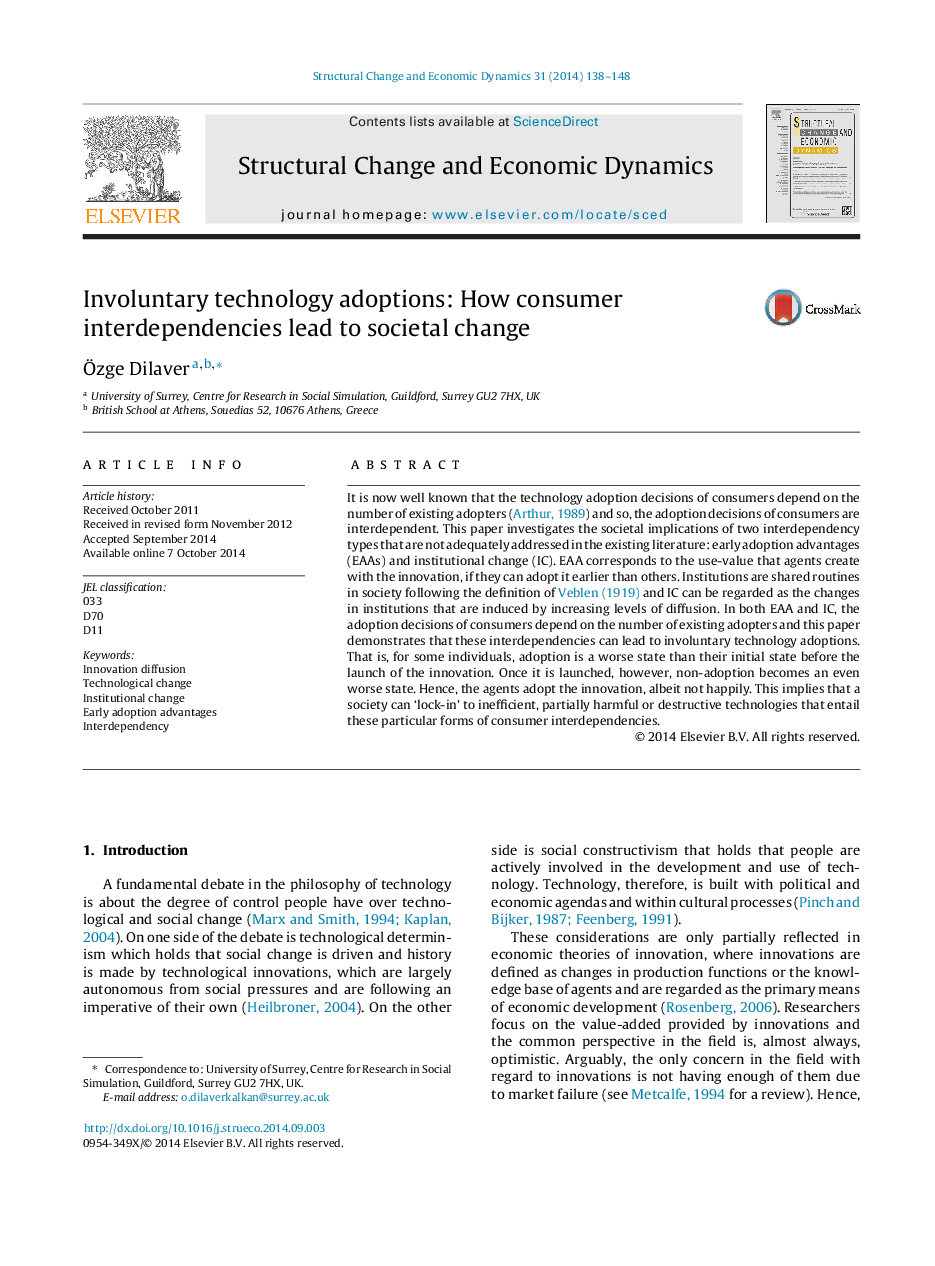| Article ID | Journal | Published Year | Pages | File Type |
|---|---|---|---|---|
| 988429 | Structural Change and Economic Dynamics | 2014 | 11 Pages |
•This paper studies consumer interdependencies during diffusion of innovations.•It focuses on the effects of early adoption advantages and institutional change.•The paper shows that these interdependencies can cause involuntary adoptions.•Societies may lock-in to inefficient innovations due to involuntary adoptions.
It is now well known that the technology adoption decisions of consumers depend on the number of existing adopters (Arthur, 1989) and so, the adoption decisions of consumers are interdependent. This paper investigates the societal implications of two interdependency types that are not adequately addressed in the existing literature: early adoption advantages (EAAs) and institutional change (IC). EAA corresponds to the use-value that agents create with the innovation, if they can adopt it earlier than others. Institutions are shared routines in society following the definition of Veblen (1919) and IC can be regarded as the changes in institutions that are induced by increasing levels of diffusion. In both EAA and IC, the adoption decisions of consumers depend on the number of existing adopters and this paper demonstrates that these interdependencies can lead to involuntary technology adoptions. That is, for some individuals, adoption is a worse state than their initial state before the launch of the innovation. Once it is launched, however, non-adoption becomes an even worse state. Hence, the agents adopt the innovation, albeit not happily. This implies that a society can ‘lock-in’ to inefficient, partially harmful or destructive technologies that entail these particular forms of consumer interdependencies.
